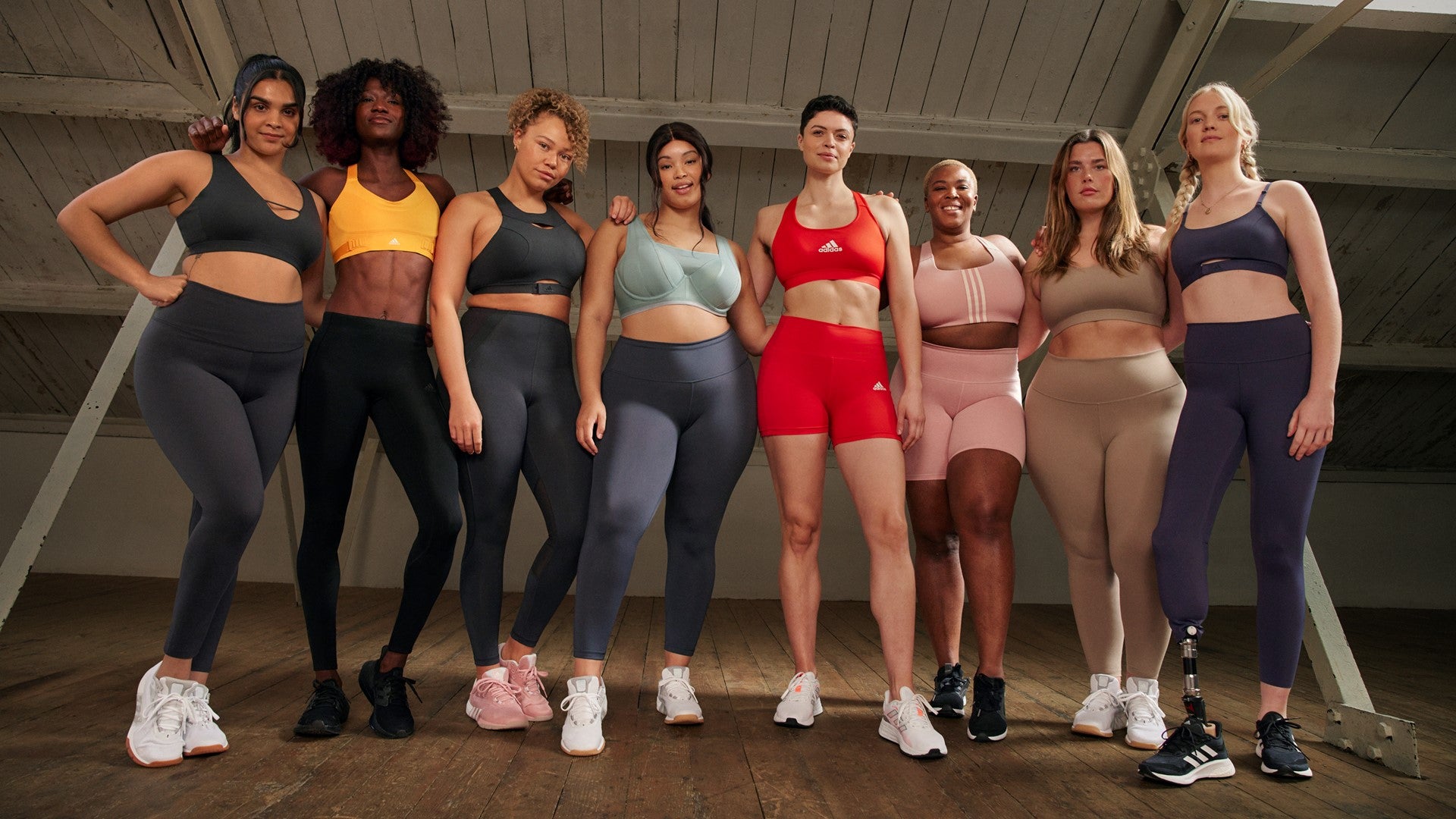Has Adidas finally figured out the science of sports bras?
Adidas is serious when it says it wants to support women.


Adidas is serious when it says it wants to support women.
The sports giant announced a dramatic re-engineering of its sports bra collection to better serve the full spectrum of women’s breasts.
The new products—43 in total—were designed with breast health and biomechanics experts at the University of Portsmouth, who took into account everything from breast shape to activity level. Created by an all female team of designers, testers, and experts, the designs were launched with a body-positive collage showing breasts of all kinds.
New sports bras are most inclusive, extensive sizing for the brand
Around 90% of women are wearing the wrong sports bra, said Adidas. Improper fit leads to breast pain and permanent breast tissue damage. It also impacts sports performance.
Breasts have very little support naturally. They are tissue that sit in front of the pec muscles without being attached to them, and contain no muscle themselves. They are mostly supported by skin, in addition to Cooper’s ligaments, which are thin structures to protect the milk-producing parts of the breast, but are not designed to lift and hold it.
“Unknown to many, athletes may require the same amount of breast support during power walking as they do during sprinting, and a lack of support has the potential to cause irreversible damage,” said Joanna Wakefield-Scurr, the lead University of Portsmouth researcher on the project.
Amy Charlton, Adidas senior product director, added that unsupported breasts could travel an extra four miles on their own during a marathon and lead women to experience the same G force as an F1 driver.
Nearly half of schoolgirls who were surveyed by the team reported their breasts affected their participation in sports. Customization of sports bras can have a huge impact, and, for some professional athletes, may mean the difference between medaling or not.
People respond to #SupportIsEverything on Twitter and Instagram
Social media was not ready to process Adidas efforts to highlight the diversity of women’s breasts though. The company initially uploaded its breast collage to Instagram, editing the photo so that it technically complied with the platform’s rules to cover nipples. (Instagram bans visible female nipples, though it has no such rule against male nipples.)
However, the post was soon deleted. The brand then uploaded new photos that showed markings on women’s skin to illustrate the discomfort that can come with badly fitted bras.